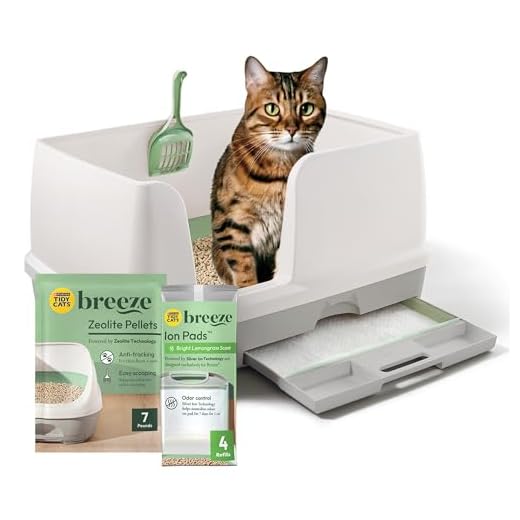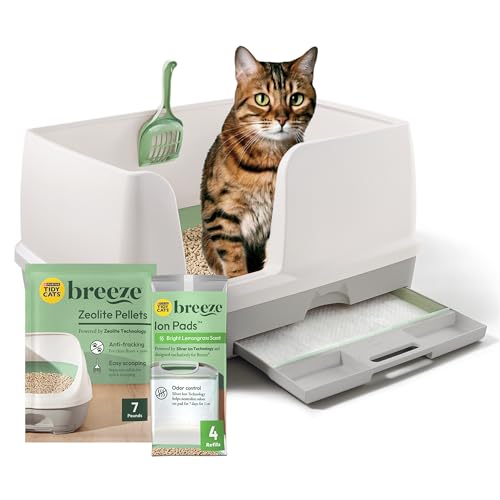

First off, having a well-maintained litter box is key. I always appreciate when my humans keep it clean and filled with fresh litter. It’s best to scoop it at least once a day to eliminate any unpleasant odors and ensure I have a comfortable spot to do my business.
Next, consider the location of my bathroom. A quiet and private area is ideal. Avoid placing it near my food and water bowls. I prefer some peace and tranquility when I’m handling my business. If I feel stressed or exposed, I might just look for another spot.
Also, the type of litter matters. Experiment with different kinds to find one that I like. Some felines prefer clumping litter, while others enjoy crystals or natural options. Make sure it’s unscented too; strong fragrances can be off-putting for us.
Regular vet visits are essential to rule out any health issues. Sometimes, finding a new place to relieve myself can be a sign of underlying problems. Keeping track of my habits can help my humans notice if something seems off.
Lastly, positive reinforcement works wonders. Treats and praise when I use the litter box can encourage me to stick to that routine. Happy vibes lead to good habits!
Tips for Keeping Your Space Clean
Ensure the litter box is in a quiet, accessible location. This encourages me to use it rather than find alternative spots.
Regularly clean the litter box, ideally daily. A clean space is more inviting, and it helps prevent any unpleasant odors.
Provide enough boxes–one extra box for each feline. If I have options, I’m less likely to choose inappropriate areas.
Experiment with different types of litter. Some textures and scents appeal to me more than others.
Consider my health. If I’m acting differently, a trip to the vet may be necessary to rule out any issues.
Establish a routine. Consistent feeding and playtimes can help regulate my habits.
Use attractants in the litter box. Special additives can make it more appealing for me to use.
Block off areas where I might sneak off to do my business. Use pet gates or close doors to limit access.
Understanding Your Feline’s Litter Box Preferences
To create a comfortable restroom experience, it’s crucial to know what your furry friend prefers. Start by choosing the right type of litter. Most kitties lean towards fine-grained, unscented options. Experimenting with different brands can help identify the preferred texture.
Next, consider the box itself. Some whiskered companions prefer covered boxes for privacy, while others feel more secure in open ones. It’s beneficial to provide multiple styles to see which one your pet favors.
Location matters too. Place the litter box in a quiet, low-traffic area. Cats appreciate having their own space away from loud noises and disturbances. If your home has multiple levels, ensure there’s a box on each floor.
Regular maintenance is non-negotiable. Clean the box daily to remove waste and change the litter weekly. A dirty box can deter even the most patient pets from using it. If you’re struggling to keep things tidy, consider investing in a self-cleaning model.
Pay attention to the size of the box. It should be at least one and a half times the length of your pet. A cramped box can lead to accidents outside of it. For larger breeds, opt for a roomy litter box to ensure comfort.
Finally, keep an eye on your pet’s behavior. If they suddenly refuse to use the box, it might indicate stress or health issues. A visit to the vet is advisable in such cases.
For additional tips on creating a pet-friendly environment, check out these best couches for cats that scratch to ensure your furniture is safe while meeting your kitty’s needs.
Choosing the Right Litter Box and Location
Opt for a box that is at least one and a half times my length, allowing enough space for comfort. Covered options can provide privacy, but ensure there’s easy access for me. Also, consider the type of litter; I prefer fine textures that are gentle on my paws.
Place the box in a quiet, low-traffic area, away from loud appliances or direct sunlight. Avoid corners or cramped spaces that might feel confining. Easy accessibility matters, so I recommend a location where I won’t feel trapped or startled. If I can’t reach it easily, I might look for alternatives.
Introduce multiple boxes if you have more than one feline. A good rule is to have one box per cat plus one extra. This setup decreases competition and makes me feel more secure when nature calls.
Regular cleaning is key. I appreciate a tidy environment, so scoop daily and change the litter weekly. This will encourage me to use my designated space instead of finding other spots around the house.
Establishing a Regular Cleaning Routine
Consistency is key. I recommend cleaning my litter area at least once a day. This helps maintain a fresh environment and encourages me to use it regularly. Set a specific time each day for this task – morning or evening works well.
In addition to daily cleanings, a deeper clean should occur weekly. This includes washing the litter box with mild soap and water, ensuring no residues or odors remain. A clean box is more inviting!
Use a calendar or reminder app to keep track of cleaning schedules. This can help prevent lapses and ensure that maintaining my space becomes a habit.
Consider designating a specific spot for supplies like litter, scoops, and cleaning products. Having everything in one place saves time and makes the process smoother.
| Task | Frequency |
|---|---|
| Daily cleaning | Every day |
| Deep cleaning | Weekly |
| Supplies check | Monthly |
By following a consistent routine, my living space remains pleasant. This reduces accidents and makes both our lives easier. A little effort goes a long way in keeping everything tidy!
Identifying and Addressing Stress Factors for Your Feline Friend
Recognizing signs of anxiety in me is essential for maintaining a happy environment. Common indicators include excessive grooming, hiding, and changes in appetite. To help me feel secure, consider the following:
- Establish a routine: Consistent feeding and playtime schedules help create predictability.
- Create a safe space: Designate a quiet area with cozy bedding and toys where I can retreat when feeling overwhelmed.
- Minimize changes: Sudden alterations in the home, like new furniture or additional pets, can trigger stress. Introduce new elements gradually.
- Provide enrichment: Interactive toys and climbing structures keep me engaged and stimulated, reducing anxiety.
Be attentive to my body language; a flicking tail or flattened ears signals discomfort. Additionally, consider pheromone diffusers to promote calmness in the environment.
Regular health check-ups are vital. Illness can cause behavioral changes, so keep an eye on my health. If stress persists, consult a veterinarian or a pet behaviorist for tailored advice.
For a delightful distraction, try out something different like how to cook lobster tail in cast iron skillet. A happy human means a happier me!
Training Your Feline to Use the Litter Box Properly
Start with placing me in the litter box right after meals or naps. This is when I’m most likely to relieve myself. Gently place me inside, allowing me to sniff and get comfortable with the texture of the litter.
Use positive reinforcement. When I do my business in the right spot, reward me with treats or affection. This builds a link between the action and a happy response. Remember, I respond well to praise; a gentle “good job” goes a long way!
Keep my bathroom area quiet and private. I prefer a serene environment without loud noises or distractions. If it’s too chaotic, I might avoid my designated spot altogether.
Consistency is key. Maintain a routine for taking me to the litter box. This helps me understand when and where I should go. If I resist, don’t force it. Instead, try again in a little while. Patience is crucial.
Observe me closely for signs that I need to go. If I’m scratching at the floor or acting restless, gently guide me to my litter box. This will help me connect those behaviors with the action of using the box.
Experiment with different types of litter. I have my preferences, and discovering which one I like best can make a significant difference. Some of my friends prefer clumping, while others like natural options.
Ensure the box is easily accessible. I don’t want to navigate obstacles or deal with closed doors. A convenient location increases my likelihood of using it regularly.
Consulting a Veterinarian for Health-Related Issues
Seek veterinary advice immediately if you notice changes in your elimination habits. A professional can rule out any underlying medical conditions that may be causing distress.
Signs Indicating a Visit is Necessary
- Frequent attempts to eliminate without success
- Presence of blood in waste
- Change in appetite or drinking habits
- Unusual lethargy or behavior
- Weight loss
What to Expect During the Visit
Your vet will likely perform a physical examination and may recommend tests such as blood work or imaging to identify any health issues. Be prepared to provide information about your diet, daily routine, and any recent changes in your environment.
Follow-up visits are crucial if prescribed treatment or medication is given. Regular check-ups maintain overall well-being and prevent future problems.








